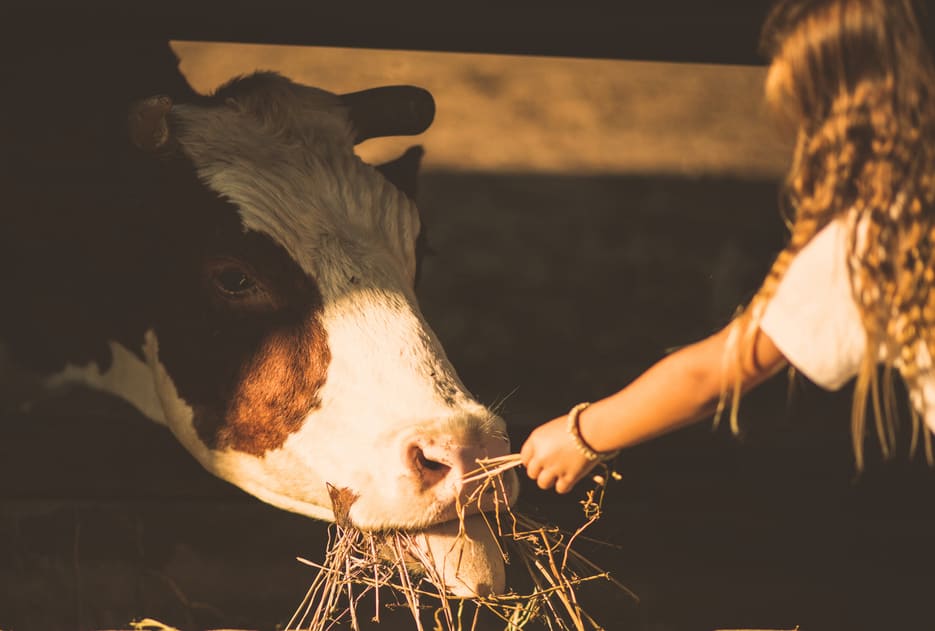Q fever is an infectious disease responsible for abortions and other reproductive disorders in animals. But beyond animal health, Q fever is a zoonosis: people can become contaminated by animals. For these two reasons, it is of primary importance to control the disease. Among the tools available, there are non-medical measures and a Q fever vaccine for animals.
Non-medical measures
Animals and humans can become infected mostly by inhaling Coxiella burnetii, the bacterium responsible for Q fever. This bacterium is shed by infected animals through three routes:
- The milk
- The feces
- The genital route including vaginal fluids, placenta and aborted fetuses
Milk being a minor virulent material, attention should be paid mostly on the fecal and the genital routes.

About fecal route, manure should be spread only when animals and humans are not present in the area and when the wind is not blowing.
Regarding genital route, placenta and other fetal annexes must be removed as soon as possible after parturition, stored properly, and destroyed. In the case of abortion, aborted fetus should be considered in the same way.
Special precautions should be taken by those assisting parturient female: wearing disposable gloves and, if possible, a face mask is a good way to limit the risk of contamination, especially if Q fever is known on the farm.
A Q fever vaccine for animals also exists and is helpful to complete these non-medical measures.
A Q fever vaccine for animals to control the disease
Ruminants can be vaccinated to control Q fever symptoms and the shedding of the bacteria.
Several studies highlighted the interest of the Q fever vaccine for animals.
- In goats, in an experimental study, vaccination reduced to 6% the aborted rate of vaccinated goats while 3 out of 4 unvaccinated goats aborted.
- In cows in infected herds, a field study showed that fertility increases when animals are vaccinated. Indeed, the calving to conception interval was reduced by 14 days and the success rate at first insemination was increased by 39%.
- In cattle infected herd, an economic simulation showed that the vaccine improves the profitability of the farm: between 3000 and 12000 euros saved in three years for a 100 dairy cows herd.
- Regarding the control of the contamination of the environment and therefore the risk to human health, several studies provided evidence that the vaccine is efficient to reduce the shedding of the bacteria by the animals in an infected herd. For example, a field trial carried out in France showed that the risk of becoming a shedder is divided by 5 when the cows are vaccinated.
To summarize, vaccination has two complementary effects:
- The control of clinical signs and therefore the improvement of animals health and welfare.
- The reduction of environmental contamination by the bacteria and therefore the protection of the other animals and of humans.
Characteristics of the Q fever vaccine for animals
The vaccine is indicated for cattle and goats. It contains phase 1 inactivated Coxiella burnetii. As it is an inactivated vaccine, it is highly safe. It has been on the market for over 12 years and no major adverse events have been reported since then.

In opposition to phase 2, phase 1 Coxiella burnetii trigger a high immune response by activating both cell (T lymphocytes) and humoral (B lymphocytes) immune responses. The Q fever vaccine for animals is therefore very efficient to control the disease and to reduce the bacterial shedding by the animals.
Q fever vaccine for animals: how it works ?
Since the vaccine is very safe, it can be used in young animals from 3 months of age. The first year of vaccination, two injections 3 weeks apart. The following years, only a booster dose should be given once a year.
For a better efficacy at animal level, the protocol should be completed before mating or artificial insemination. But, from a practical point of view, this can be difficult to achieve. However, one study has shown that it is better to vaccinate all the animals in the herd (even if they are already pregnant) than to vaccinate only the non-pregnant females.
Regarding the duration of vaccination, both field monitoring of herds and mathematical modelling have shown that stopping vaccination too early leads to a recrudescence of the disease. It is therefore recommended to continue vaccination for at least 5 years, and ideally 10 years.
So, to summarize, the ideal protocol is
- the first year: vaccinate all animals in the herd from three months of age, regardless of their pregnancy status
- the following years:
- booster vaccination for all animals vaccinated the previous year
- Primo-vaccination (2 injections three weeks apart) to all animals over three months of age that have never been vaccinated
- booster vaccination for all animals vaccinated the previous year
The control of Q fever in ruminant herds involves non-medical measures (biosecurity) and animal vaccination. The commercially available vaccine reduces both the clinical signs of the disease, such as abortions, and the shedding of the causative bacteria.
Thus, the risk of contamination of other animals and humans is controlled.
About the author
Philippe Gisbert (Ruminants Global Technical Manager)
Philippe Gisbert started his career in 1994 as a Vet practitioner working with companion and farm animals for over 9 years. He then became Health Affairs Manager for Group Agena (artificial insemination company). In 2008 he joined Eurofins – Laboratoire Coeur de France as Animal Health Unit Manager where he worked for 7 years until he joined Ceva France as Technical Manager Ruminants (Infectiology, Vaccines and Diagnostic). Since 2020 he is Global Technical Manager for Biologicals, Udder Health and Antiinflammatories. He is a member of SIMV diagnostic and anti-infective technical groups and has integrated different working groups of ANSES and UNCEIA related to epidemiology, antibiotic resistance and reproduction in livestock.
Explore author’s articles

Leave your comments here